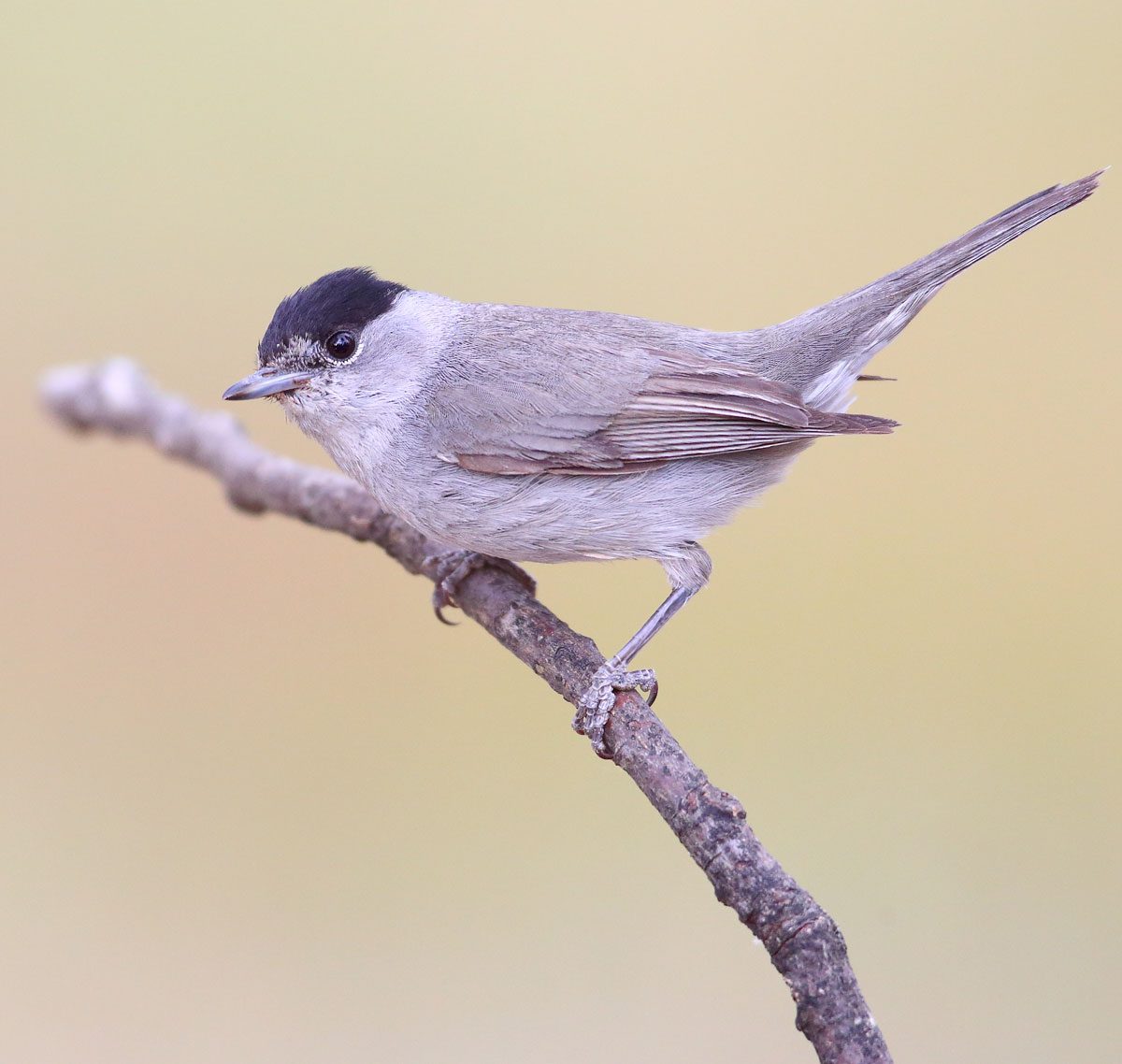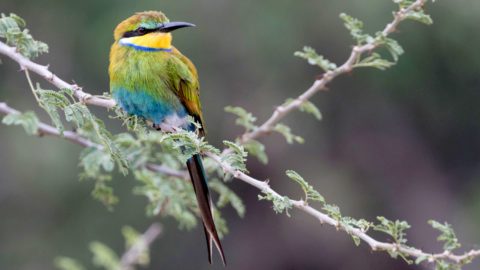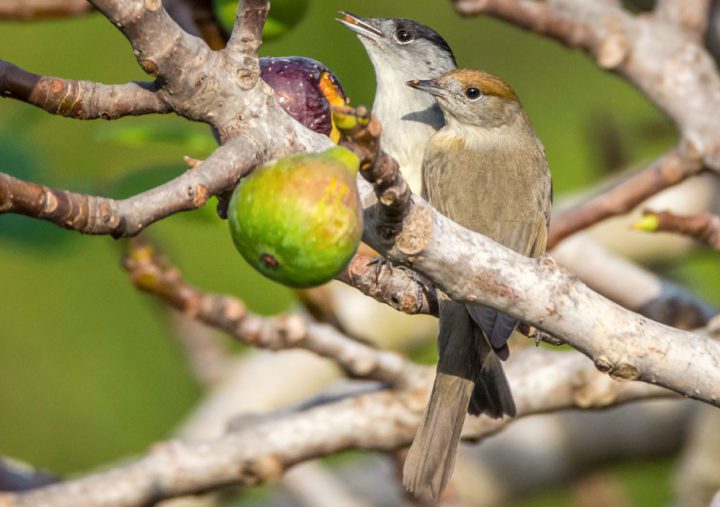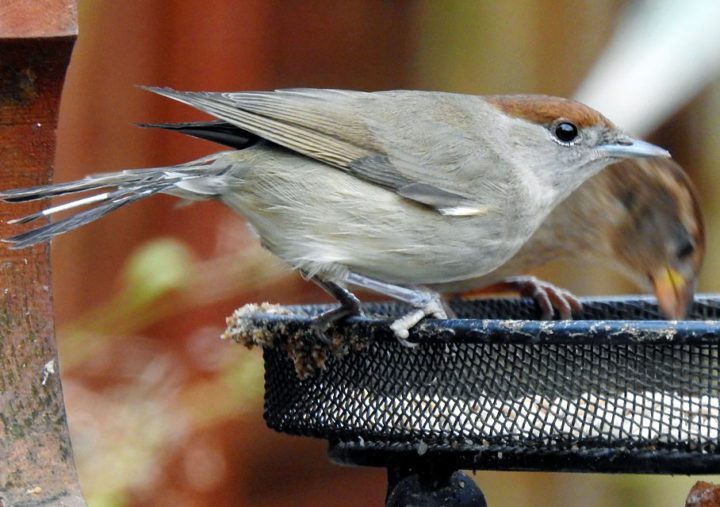Some Eurasian Blackcaps Are Flipping Migration, Flying North for Winter
By Marc Devokaitis
Eurasian Blackcap by Sérgio Correia/Macaulay Library. December 21, 2021A growing number of Eurasian Blackcaps are skipping Africa and heading to places like Britain and Ireland for winter. Abundant backyard feeders could be one reason they're thriving.
From the Winter 2022 issue of Living Bird magazine. Subscribe now.
The year-round warmth of the Mediterranean and Africa is a wintertime draw for migratory birds in temperate regions of continental Europe. But at least one bird that breeds in Europe has turned migration on its head and is now heading north for the winter.
For several decades, scientists and birdwatchers have observed that a small number of Eurasian Blackcaps, common warblers that breed across most of Europe, were changing their migratory itineraries. Instead of heading to the southern Mediterranean and Africa like most of their population, these pioneering blackcaps reversed their migration—flying from breeding locales across continental Europe to winter in the woods and backyards of the British Isles and southern Scandinavia.
New research published in the journal Global Change Biology sheds light on this fascinating phenomenon by revealing some of the behavioral and physical differences of the British Isles–wintering blackcaps. The study also tracks, for the first time, the routes and seasonal movements of some of these reverse-migratory birds.

Blackcaps are spunky and widespread Eurasian warblers (which are not closely related to North American wood-warblers). They’re about the size of a Song Sparrow, and they look a bit like miniature versions of Gray Catbirds. Blackcaps are sometimes known as “mock nightingales” because of their melodious and varied songs.
The species is thriving—BirdLife International reports that there are at least 100 million blackcaps worldwide, and their population is likely increasing. The most recent data from the European Bird Census Council shows an estimated 20% population increase from 2010 to 2019.
“Many migratory birds are in decline, but the blackcap seems to be thriving in a changing world,” says Benjamin Van Doren, a postdoctoral researcher at the Cornell Lab of Ornithology and lead author of the recent paper.
The research team—consisting of scientists from Oxford University, British Trust for Ornithology, and Max Planck Institute—wanted to take a closer look at the blackcaps that are spending the winter in the British Isles and compare them to blackcaps that winter in more traditional southern locales. They banded hundreds of birds at dozens of sites across the British Isles and recruited community members to report sightings of the birds at backyard feeders over the course of four consecutive winters, starting in 2016/17. They also tracked several dozen blackcaps with geolocators to follow their movements throughout the year.

Eurasian Blackcaps feast on figs in Spain in October. Female blackcaps have a warm brownish-red cap. Photo by Fátima Garrido Ceacero/Macaulay Library. 
Some Eurasian Blackcaps in the British Isles, like this female spotted in Dublin, Ireland, in February, stay north and make use of available food, notably at bird feeders. Photo by Brian Carruthers/Macaulay Library.
They found that blackcaps wintering in the British Isles move around much less than their southern-wintering counterparts, especially later in the winter. They are also more likely to return to the same sites from one winter to the next. The authors believe the availability of food is the main reason for the difference. Around half of all British households feed birds, and research from 2015 indicates that blackcaps wintering in Britain are becoming increasingly associated with backyard bird feeding. Blackcaps are partial to high-energy foods such as suet blocks and fat balls; the researchers even report households providing croissants and homemade Victoria sponge cake to their birds.
“Birds that winter in the Mediterranean and Africa are primarily eating fruit and moving large distances to track local food abundance,” says Van Doren. “Blackcaps wintering in British and Irish backyards have a steady, predictable food supply, and as a result they move around a lot less.”
Additionally, the British Isle–wintering blackcaps appear to be in better shape than the more transient individuals in the study. The results showed the birds frequenting backyards to be in better body condition, and they were able to maintain smaller fat reserves (birds carrying less fat have an easier time avoiding predators). These birds were also able to make a speedier return journey in the spring, arriving back to their continental breeding grounds around 10 days earlier than the Mediterranean- and African-wintering birds—potentially a considerable advantage at a crucial time of year.
The researchers even found that backyard bird feeders may be influencing blackcap anatomy: those blackcaps that frequented backyards had longer bills and more rounded wingtips, traits that may be linked to their more generalist diet and sedentary winter lifestyle.
Similar changes in wintering behavior have been detected in North America using data from the Cornell Lab’s Project FeederWatch.
“On the West Coast, FeederWatch data show that Anna’s Hummingbirds are now wintering as far north as British Columbia, and those northern-wintering birds are concentrated in human population centers,” says FeederWatch Project Leader Emma Greig. [See 30 Years of Project Feederwatch Yield New Insights About Backyard Birds, Winter 2017]
The blackcap research also aligns with another new study published in Global Change Biology in October that shows European migratory birds shifting their migrations. Researchers examined 50 years of arrival and departure dates for 20 species that breed in Europe and migrate to sub-Saharan Africa. The birds were arriving in Africa later in the fall and returning to their breeding grounds earlier in spring—spending an average of 63 fewer days on their wintering grounds than they did a half-century ago.
Van Doren says the results from his work on blackcaps show that some birds have great flexibility in their movement patterns and how they respond to environmental conditions: “Species with this kind of flexibility will probably be better equipped to face environmental changes in the coming decades.”

All About Birds
is a free resource
Available for everyone,
funded by donors like you
American Kestrel by Blair Dudeck / Macaulay Library





